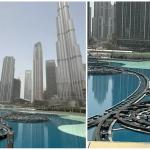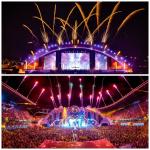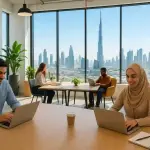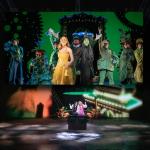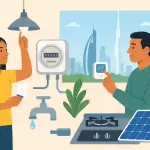Dubai Municipality has successfully completed a comprehensive series of landscaping and afforestation projects across key roads and intersections in the emirate during the first half of 2025. With an investment of Dh190 million, the initiative covers more than 3 million square metres and reflects the emirate's commitment to enhancing its urban landscape and sustainability.
The initiative forms part of the broader Dubai Quality of Life Strategy 2033, which aims to transform Dubai into a leading sustainable global city through aesthetic urban development and green innovation. These large-scale projects targeted a number of high-traffic locations and entry points into Dubai.
Strategic Landscaping Locations
The newly landscaped areas include:
- The intersection of Al Khail Road and Latifa bint Hamdan Street
- The intersection of Sheikh Zayed bin Hamdan Street and Tripoli Street
- Sheikh Rashid Street, from Sheikh Khalifa bin Zayed Street to Al Mina Road
- Sheikh Zayed Road, from the 7th Interchange at the Abu Dhabi entry point
- Al Khawaneej Street, at the intersection with Al Amardi Street
These locations were carefully chosen for their visibility and traffic volume, ensuring that the green enhancements would have maximum impact on both residents and visitors.
Over 300,000 Trees and Seedlings Planted
As part of the project, Dubai Municipality planted more than 300,000 trees and seedlings. In addition, 222,500 square metres of ground covers and ornamental flowers were introduced. The effort incorporates a combination of native and ornamental plant species, such as:
- Native trees: Sidr, Ghaf, Neem
- Ornamental trees: Chorisia, Washingtonia, Royal Poinciana, Millingtonia, Albizia, and Bougainvillaea
This diverse selection not only enhances visual appeal but also ensures resilience in Dubai’s arid climate.
Smart and Sustainable Irrigation Systems
Sustainability was central to the project’s implementation. The landscaping features smart irrigation systems equipped with underground pumps to optimise land use and reduce surface clutter. These systems are supported by Internet of Things (IoT) technologies, which allow for real-time monitoring, efficient water usage, and automated adjustments based on weather and soil conditions.
These sustainable irrigation solutions aim to reduce water waste, support Dubai’s environmental goals, and ensure the long-term viability of the new green spaces.
Enhancing the City’s Aesthetic and Urban Identity
Speaking about the initiative, Marwan Ahmed bin Ghalita, Director General of Dubai Municipality, stated: “Our aim is to reinforce Dubai’s distinctive urban and aesthetic identity and solidify its position as a leading sustainable global city. We seek to offer a vibrant and healthy living environment that upholds the highest standards of quality of life for residents and visitors."
He added that the landscaping efforts reflect the municipality’s continuous drive to align with the latest in sustainable landscaping and urban development.
Bader Anwahi, CEO of the Public Facilities Agency at Dubai Municipality, emphasized that the projects were executed based on precise urban and environmental standards, with a strong focus on selecting climate-adapted plant species cultivated in the municipality’s own nurseries.
In addition, decorative fencing and unified colour schemes were introduced at major entry points to present a welcoming and consistent visual experience for visitors entering the city.
Architectural and Visual Enhancements
The landscaping initiative extended beyond planting and irrigation. In some locations, Dubai Municipality introduced aesthetic enhancements that blend culture and innovation. For example, the intersection of Al Khail Road and Latifa bint Hamdan Street now features vertical lighting structures inspired by traditional Arab architecture. These lights change colour to reflect national holidays and celebrations, further enriching the city’s creative and dynamic visual identity.
Expanding Green Coverage
As of the end of Q1 2025, Dubai Municipality manages:
- 5.5 million trees and seedlings
- 8.7 million square metres of landscaped green areas
- 2 million square metres of seasonal flowers
- 6.3 million square metres of ground covers
- 1.3 million linear metres of plant fencing
In 2024 alone, the municipality planted 216,500 new trees, averaging nearly 600 trees per day. These efforts helped increase total green space in Dubai from 234 hectares in 2023 to 391.5 hectares in 2024.
Commitment to Sustainability and Well-being
The landscaping and afforestation projects exemplify Dubai Municipality's proactive approach to enhancing public spaces. By combining innovative technology, native plantings, and aesthetic design, the projects contribute significantly to environmental sustainability, public health, and urban beauty.
These green investments are aligned with Dubai’s broader vision to provide livable, sustainable urban environments that improve quality of life and foster ecological awareness among residents and visitors alike.
As Dubai continues to grow and urbanise, such initiatives reflect a clear commitment to balancing development with environmental responsibility, ensuring the city remains not just a hub of progress, but also a beacon of green innovation for the future.





